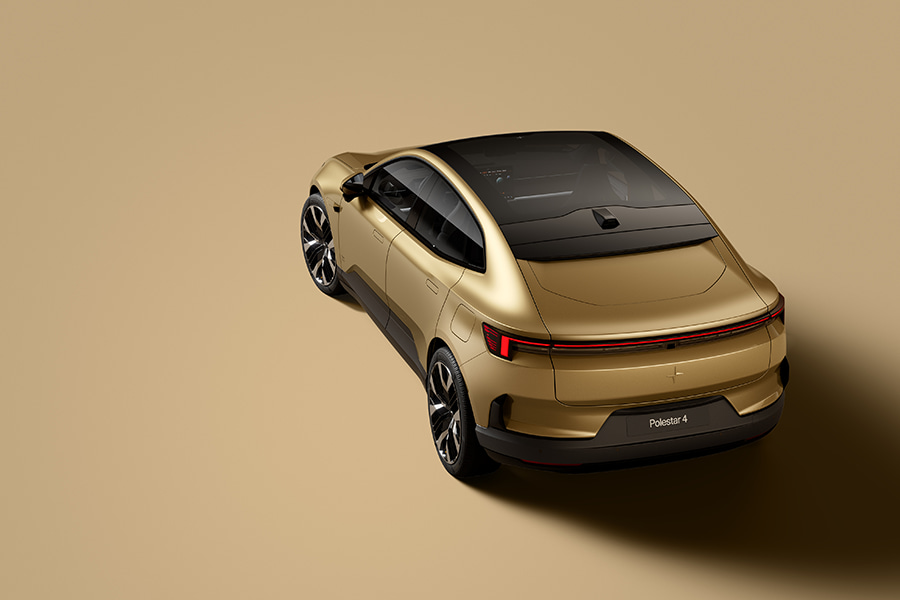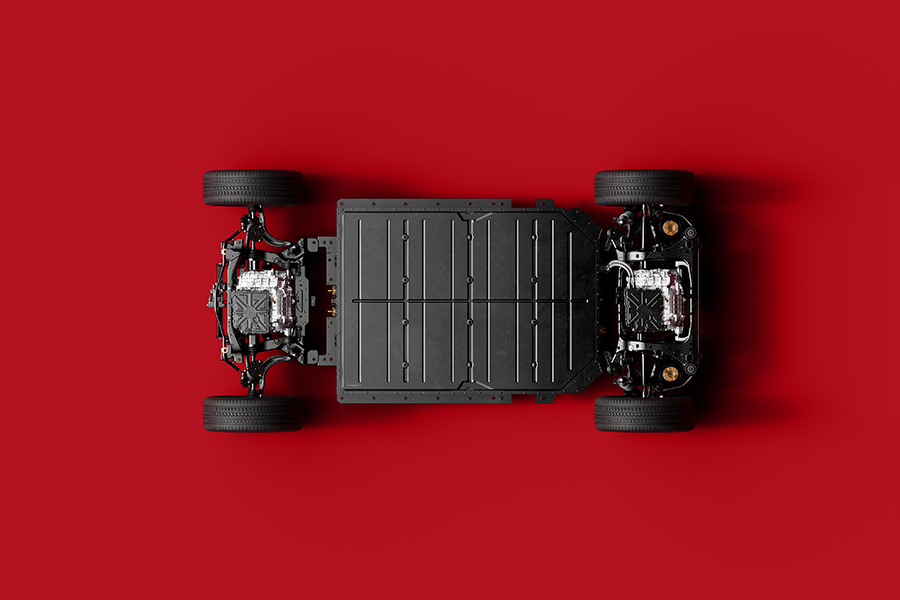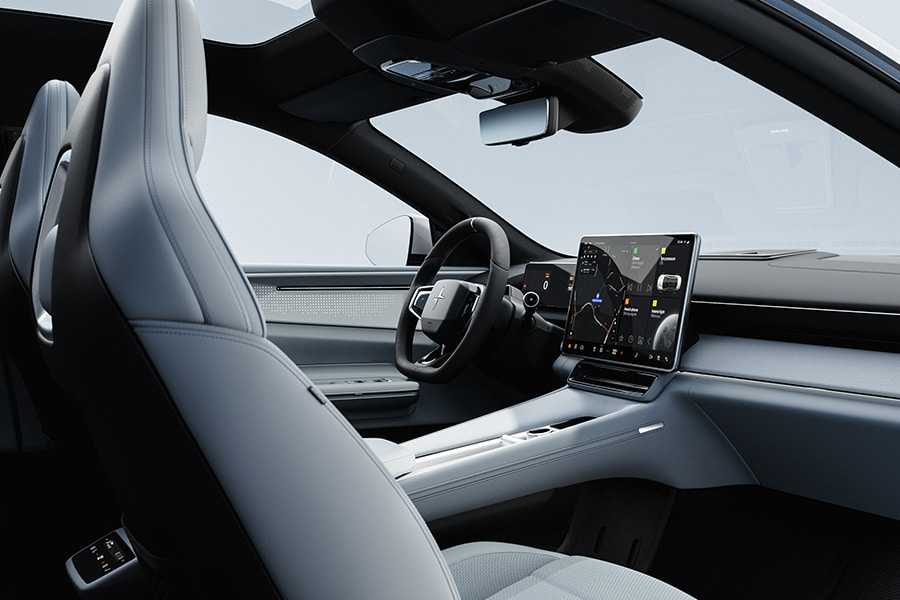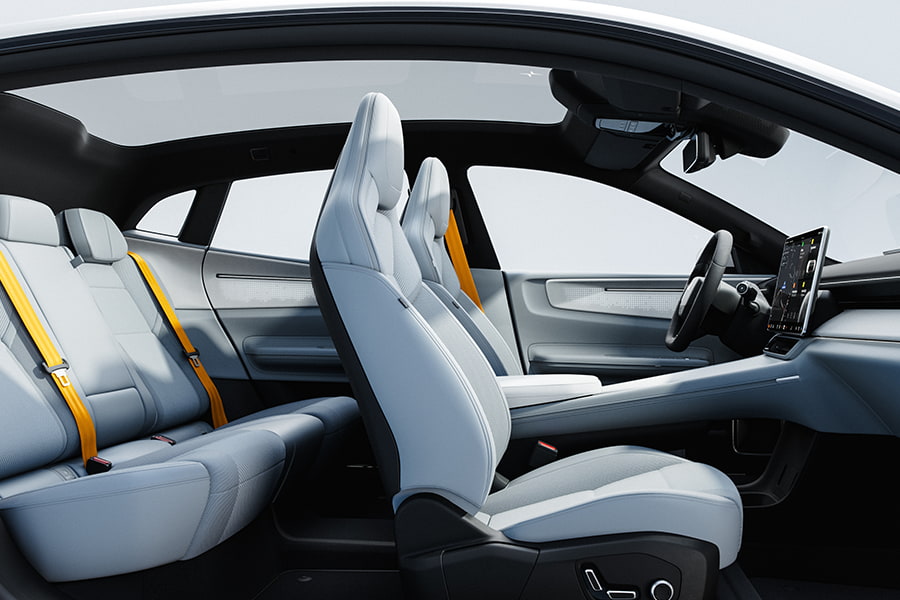Whether you’re ready to get started or would like to know more, we’re here to help.
By Carsales staff
The numbers keep stacking up for Polestar, with the Sino-Swedish all-electric car maker revealing its latest model, the Polestar 4, at the Shanghai Motor Show earlier this year.
Set to arrive in Australia – and join the existing Polestar 2 sedan and upcoming Polestar 3 SUV – the Polestar 4 brings a new body style to the range with its high-riding, coupe-like design.
Aimed directly at the country’s most popular electric-powered soft roader, the Tesla Model Y, the Polestar 4 casts a sleeker silhouette, measuring 4839mm long and 2139mm tall (making it both longer and wider than the Tesla) while its roofline is 80mm lower.
The Geely-owned Swedish brand has also revealed an “indicative” launch price of €60,000 ($A98,310), which is about mid-way between the starting prices of the Polestar 2 ($63,900) and Polestar 3 ($132,900), but a lot more than the Model Y ($69,300).

Borrowing design cues first seen on the Polestar Precept concept and brandishing a drag coefficient of just 0.269Cd, the Polestar 4 flaunts the brand’s new signature dual-blade headlights and full-width lighting signature across its rear-end.
The Polestar 4 will be the most crucial new model launched within the brand’s expanding model range over the next few years, given it will square up against higher end variants of the Model Y, as well as Hyundai IONIQ 5 and Kia EV6 variants – three of the most in-demand EVs globally right now.
Just like its rivals, the Polestar 4 will be offered with the choice of a single- or dual-motor drivetrains, each powered by a big 102kWh lithium-ion battery.
The configurations will create two different variants – the Long Range Single Motor and Long Range Dual Motor, the former of which will cover up to 600km on a single charge, says Polestar.

The single permanent magnet synchronous motor is mounted to the rear axle and produces 200kW of power and a modest 343Nm of torque, resulting in a claimed 0-100km/h time of 7.4 seconds and a top speed of 180km/h.

Most of those numbers are either doubled or halved when referring to the dual-motor powertrain because the front motor is identical to the rear, meaning the flagship Polestar 4 produces 400kW/686Nm and stops the 0-100km/h clock in 3.8 seconds, making it about as quick as the Model Y Performance.
With the extra power comes greater energy consumption, which reduces the driving range to a still decent 560km (WLTP). But the Dual Motor model will offset that with an added element of comfort as it will be fitted with adaptive dampers as standard equipment.
The 400V electrical architecture of the SEA platform under the Polestar 4’s slinky body means it can only be charged at up to 200kW when hooked up to a DC fast charger. However, Polestar claims the battery can be replenished from five to 80 per cent capacity in 32 minutes.

Inside, the cabin is just as striking as the exterior with its minimalist design contrasted by an array of digital screens, including a large-format 15.4-inch infotainment display, a 10.2-inch instrument cluster and a 14.7 head-up projection.
While exact specifications have yet to be finalised for Australian models, other highlights include a virtual rear-view mirror, full glass roof, 20-inch alloy wheels, eco-friendly cabin materials, a 15-litre frunk, Pirelli P Zero tyres, Apple CarPlay, over-the-air updates, reclining rear seats, rear entertainment and HVAC controls and adjustable ambient lighting.
Even more style, gear and driver aids will be available via optional Plus, Performance, Pilot and Nappa equipment packs.

Being an SUV, it shouldn’t come as much of a surprise to find there’s 500 litres of cargo volume behind the Polestar 4’s rear seats and up to 1536L with the second row folded flat.
Braked towing capacities are rated at 1500kg for the single-motor version and 2000kg for the dual-motor, but each has a tow ball limit of only 100kg.
A dozen cameras, one radar and 12 ultrasonic sensors are fitted to the Polestar 4 as standard, along with a driver monitoring system featuring eye-tracking and attention warning.
“With Polestar 4 we have taken a fundamental new approach to SUV coupe design,” said Polestar CEO Thomas Ingenlath.
“Rather than simply modifying an existing SUV, giving it a faster roofline and as a result, compromising elements like rear headroom and comfort, we have designed Polestar 4 from the ground up as a new breed of SUV coupé that celebrates rear occupant comfort and experience.”
Disclaimer: Images supplied by Polestar.
This article was prepared by an independent author. The information contained in this article represents the views and opinions of the original author, and is based on research carried out by the original author. The appearance of the article on Maxxia's website does not constitute an endorsement of its content by Maxxia in any way. The article has been made available for informational purposes only and should not be taken as advice. While all reasonable care has been taken to ensure that the statements made by the original author in the article are fair and accurate, Maxxia does not guarantee or warrant the accuracy or completeness of this information and will not be liable for, or in connection with, any loss or damage suffered as a result of any inaccuracies, errors or omissions or your reliance on this information. You should independently research and verify information before making any decision in respect of a vehicle.



